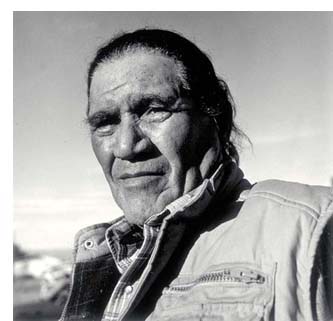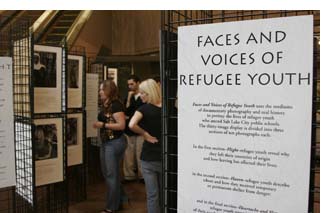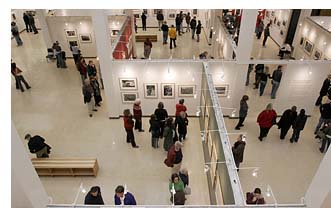CDEA History
The Center for Documentary Expression and Art (CDEA) is an outgrowth and expansion of the work of the Oral History Institute (OHI) and the Center for Documentary Arts (CDA), which were established, respectively, in 1983 and 2000. The Oral History Institute’s initial project was a statewide documentary effort to depict Twentieth Century histories of the state’s largest and oldest ethnic communities. This endeavor was intended to correct misapprehensions fostered by historians who had minimized the contributions and experiences of the state’s ethnic and minority people.
 Between 1983 and 1994, OHI conducted nearly 750 oral history interviews and took approximately 14,000 documentary photographs in Utah’s Northern Ute, African American, Chinese, Jewish, Japanese, Greek, Italian and Latino communities. From this material, OHI created a public archive in the Marriott Library of the University of Utah; an evening length modern-dance production, “Separate Journeys,” in partnership with the Repertory Dance Theater; a traveling photography exhibit entitled “Working Together: A Utah Portfolio;” and two publications—The Other Utahns: A Photographic Portfolio and Missing Stories: An Oral History of Ethnic and Minority Groups in Utah. (Note: In 1990, the University of Utah’s Marriott Library acquired the OHI documentary effort. The original oral history interviews and photographs can now be viewed at the Special Collections area of the Marriott Library.)
Between 1983 and 1994, OHI conducted nearly 750 oral history interviews and took approximately 14,000 documentary photographs in Utah’s Northern Ute, African American, Chinese, Jewish, Japanese, Greek, Italian and Latino communities. From this material, OHI created a public archive in the Marriott Library of the University of Utah; an evening length modern-dance production, “Separate Journeys,” in partnership with the Repertory Dance Theater; a traveling photography exhibit entitled “Working Together: A Utah Portfolio;” and two publications—The Other Utahns: A Photographic Portfolio and Missing Stories: An Oral History of Ethnic and Minority Groups in Utah. (Note: In 1990, the University of Utah’s Marriott Library acquired the OHI documentary effort. The original oral history interviews and photographs can now be viewed at the Special Collections area of the Marriott Library.)
During 1994-1996, in conjunction with Utah’s state Centennial, OHI produced a traveling photography exhibit called “Sacred Images: A Vision of

From The Other Utahns exhibit.
Native American Rock Art,” and an accompanying publication of the same title that featured Utah’s outdoor gallery of prehistoric art (petroglyphs and pictographs). In addition to dramatic color photographs of the sites, the project contained interviews with members of six Native American communities on the historic, mythic, and ceremonial uses and meanings of these ancient images and sites. In 1997, to celebrate the Sesquicentennial Anniversary of the founding of Salt Lake City, Mayor Deedee Corradini commissioned OHI to create a photography exhibit dramatizing the city’s diverse pioneering heritage. The exhibit was displayed in Salt Lake City and County Building from 23 July 23 to 31 December 1997.
Between 1998 and 1999, OHI documented the arrival of Soviet Jewish refugees in Utah. OHI portrayed the presence of Soviet Jews in the community and sought to uncover the causes of their migration from the USSR and the Former Soviet Union (FSU). The project produced “Streaked With Light and Shadow: Portraits of Former Soviet Jews in Utah,” a traveling exhibit and accompanying book.
In 2000, the organization changed its name to Center for Documentary Arts (in late 2011 the name was again changed to Center for Documentary Expression and Art). This change reflected the organization’s goal of creating a permanent venue for the presentation of major exhibits and of sustaining a broader array of documentary programs.
Between 2000-2002, CDA joined forces with the Utah Science Center and Global Artways to found The Leonardo, an Art, Culture, and Science Center that sought to occupy the soon to be vacant 100,000 square foot former downtown Salt Lake City library. The three organizations formed The

From the Faces and Voices exhibit.
Leonardo in order to establish a new, multi-disciplinary museum. Between 2000-2002, CDA also produced “Faces and Voices of Refugee Youth,” a collection of intimate portraits and interviews with refugee children and teens attending Salt Lake City schools. Organized into three sections—”Flight,” “Haven,” and “Heartache and Hope”—the exhibit and accompanying catalog reflected the idea that refugee youth experience three interrelated phases in their journeys from their countries of origin to the United States. The project received the 2002 Utah Education Association’s Charles E. Bennett Award for Human and Civil Rights and the 2003 NEA Appelgate-Dorros Award for Peace and International Understanding.
In 2003 Salt Lake City residents passed a 10.3 million dollar general obligation to renovate the former downtown library building and establish The Leonardo: an Art, Culture, and Science Center. Also in 2003, CDA brought in the traveling exhibit “After September 11: Images From Ground Zero” by photographer Joel Meyerowitz. Meyerowitz was the only photographer given unimpeded access to the nine-month cleanup of the World Trade Center site. From a collection of more than 8,000 images, he created a traveling exhibit that toured nationally and internationally. Salt Lake City was the second American venue for this powerful display.

The Exodus exhibit.
In 2005, CDA hosted “Exodus,” an exhibit of 300 black-and-white photographs by Sebastiao Salgado. This exhibit dramatized the complex journeys of economic and political refugees in the final decade of the twentieth century. “Exodus” drew more than 14,000 people from throughout Utah during its 10-week stay. Accompanying events included a lecture series, a Human Rights Fair, readings and art classes for children. The CDA co-hosted the exhibit with the fledgling Leonardo, the Salt Lake Film Center and the University of Utah College of the Humanities.

The Ceremonies exhibit.
In 2005, CDA also began working on a major, long-term documentary project called “From Many Shores.” The project aims to use the lens of immigrant, migrant and now, refugee histories to illuminate the multifaceted history of Salt Lake City’s west side. Salt Lake’s west side is the city’s immigrant and migrant gateway and the home to a rapidly growing multi-ethnic population. The project uses the tools of documentary work to tell this west side story and to catalyze a community-wide dialogue on race, ethnicity and immigration into Salt Lake City. As a part of this project, in 2006-2007, CDA sponsored an exhibit that introduced the theme, “Peace,” photographs by David Baddley. The display offered a meditation on the “International Peace Gardens” that are located on Salt Lake City’s west side. The exhibit was shown at the Salt Lake Art Center (SLAC) from December 21, 2006 to January 27, 2007. A limited edition exhibit catalog also was prepared. The program was suspended in 2008 and is expected to resume operation in 2012. Completion is projected for 2015.
Between 2007-2011 CDA/CDEA researched, developed, and produced “This Light of Ours: Activist Photographers of the Civil Rights Movement,” the opening exhibit of The Leonardo’s Human Rights Gallery. This Light of Ours presents the Civil Rights Movement through the work and voices of nine activist photographers—eight men and one woman who chose to document the national struggle against segregation and other forms of race-based disenfranchisement from within the movement. Unlike images produced by photojournalists, who covered breaking news events, most of the exhibit photographers were affiliated with the Student Nonviolent Coordinating Committee (SNCC) and documented its activities by focusing on the young organizers and the local people with whom they made things happen.
The core of “This Light of Ours” is a selection of 157 black-and-white photographs representing the work of Bob Adelman, George Ballis, Bob Fitch, Bob Fletcher, Matt Herron, David Prince, Herbert Randall, Maria Varela, and Tamio Wakayama. Images are organized into four movement themes and are supported by audio guides for adults and youth and didactic text. In addition, a 252-page exhibit catalogue, published by the University Press of Mississippi, and a 48-page curriculum guide for social studies teachers in grades 4-12 and fine arts/photography teachers in grades 7-12, accompany the exhibit. The exhibit catalogue contains essays by Julian Bond, Matt Herron, and Clayborne Carson and in-depth interviews with six of the photographers. The curriculum guide, prepared by CDEA, provides pre-visit, visit-based, and post-visit guidance to the exhibit.
Currently, CDEA is working on the exhibit’s national tour, which we expect to run from 2013 through 2018.
Between 2007-2011, CDA/CDEA also expanded its Exhibits That Teach (ETT) program. Initially launched in 2000 with the creation of the exhibit, “Faces and Voices of Refugee Youth,” this program develops museum-quality exhibits for display in Utah’s public and private schools. ETT displays present cutting-edge subject matter designed for use by K-12 students and can be contoured to fit most school spaces. Between 2007-2011, CDA built three additional ETT displays. Today, four exhibits are traveling to schools throughout Utah and the intermountain region. Additional exhibits are expected to be developed in the following two years (2012-2014).





